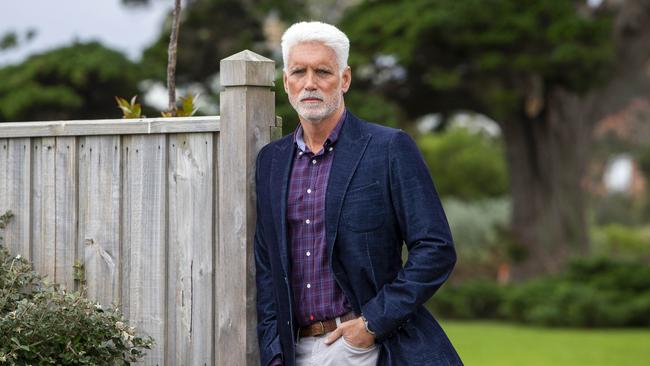Transurban’s pandemic traffic flow woes continue
The loss-making toll road giant’s traffic volumes remain low as Omicron rules hit return-to-work plans, but long term trends ‘favour more kilometres’.

Toll roads giant is looking beyond pandemic-driven losses to long-term trends and structural shifts, including more ‘polycentric cities’ which favour more kilometres being driven.
On Thursday, the group held dividend payouts steady after pandemic-led traffic declines impacted revenue and earnings negatively and resulted in a half-year loss of $103m.
The loss is an improvement on the prior corresponding period’s $419m result.
The group’s proportional toll revenue fell 0.2 per cent to $1.1bn for the six-month period with mixed average daily traffic volumes across states.
“The reintroduction of some restrictions, including density limits and the requirement for masks to be worn in offices, has impacted traffic throughout January and into February, particularly in the Australian markets,” said chief executive Scott Charlton.
“However, we are already seeing evidence that we may be past the peak, with both case
numbers and hospitalisation rates coming down.

“Post restrictions recovery has been very very quick”.
Mr Charlton said the group expected traffic to come back again as reluctance to use public transport moves more people into private vehicles.
“Flexible working arrangements will have some impact but the longer term trend won’t be any different.
“To a large extent our roads are directing people around cities, not so much into the cities.
“There are movement and timing issues … but cultural and structural shifts that will occur over the next 20 years will favour more kilometres being driven.
“When we factor all the long-term trends and structural shifts of population growth in cities, more polycentric cities (multiple CBDs), cheaper private transport due to adoption of electric vehicles and other on-demand transport options, they favour more kilometres being driven.”
Significant strategic milestones over the first half included acquisition of the remaining stake in WestConnex and agreement reached on the West Gate Tunnel Project disputes, as well as advancing the pipeline of development projects.
“The progress we have made during the half allows us to commence 2022 with a focus on our operations and the delivery of the pipeline of development and enhancement projects across our markets.”
Both those developments drew public and political criticism amid increased calls for greater transparency in government deals given Transurban’s monopoly.
Transurban runs seven of nine toll road concessions in NSW and 15 of 19 nationwide.
In September, the Australian Competition & Consumer Commission expressed criticism of the NSW government’s $11bn WestConnex stake sale.
Cost blowouts and delays at the under-construction West Gate Tunnel project in Melbourne have also troubled Transurban.
In December, it agreed to stump up an extra $2bn to finish the project by late 2025 – after deploying $3bn to December 17.
Victorian taxpayers will pay an extra $1.9bn as part of the agreement to resolve a long-running dispute over cost blowouts on project, which was to be built for a fixed price of $6.7bn by end 2022, but will now cost more than $10bn.
For the half-period, the group said toll revenue fell $13m across the Australian and Canadian networks primarily as a result of restrictions mandated by governments in response to the pandemic.
Earnings before depreciation, amortisation, net finance costs, equity accounted investments and income taxes (EBITDA) fell 7.5 per cent to $734m.

Proportional EBIDTA, which reflects the contribution of each region in the group based on its equity ownership, fell 4.1 per cent to $805m.
Royal Bank of Canada’s equity analyst Owen Birrell said this was 3.9 per cent below its consensus of $838m, denoting a ‘weak result’.
Sydney car traffic fell 27.6 per cent and large vehicle traffic declined by 4.7 per cent in the first half, leading to a 14 per cent decrease in proportional toll revenue to $527m, including new assets.
Following prolonged lockdowns, Melbourne car traffic for the six months increased by 27.7 per cent and large vehicle traffic was up 5.9 per cent, pushing toll revenue gains of 21.2 per cent to $313m.
Car traffic in Brisbane shot up 3.2 per cent and large vehicle traffic rose by 6.5 per cent contributing to a 6.7 per cent jump in revenue to $224m.
Transurban will pay a 15c per share interim dividend on February 22.
An electric vehicle enthusiast and owner, Mr Charlton said Transurban also wants to participate in the discussion around EV road charges, because “long term, it will affect us given the link to our concessions and we believe we do have something to add to those conversations”.
“There’s probably a case for moving away from fuel excise taxes (which are declining) to user pays arrangement.
“There has to be another source of funding for roads and that could come from taxpayers.”
The group also highlighted it has interest rate hedging in place on 99 per cent of its debt in the near to medium term, which positioned it to benefit it from any inflation-linked toll escalations and rate rises.
“Yes, the cost of rising interest rates is a cost to us, but at the same time, nearly 70 per cent of our revenue is inflation-linked and inflation rising is a good thing for us,” Mr Charlton said.
Transurban shares are up 0.7 per cent to $12.97 at 1.30pm AEDT.




To join the conversation, please log in. Don't have an account? Register
Join the conversation, you are commenting as Logout